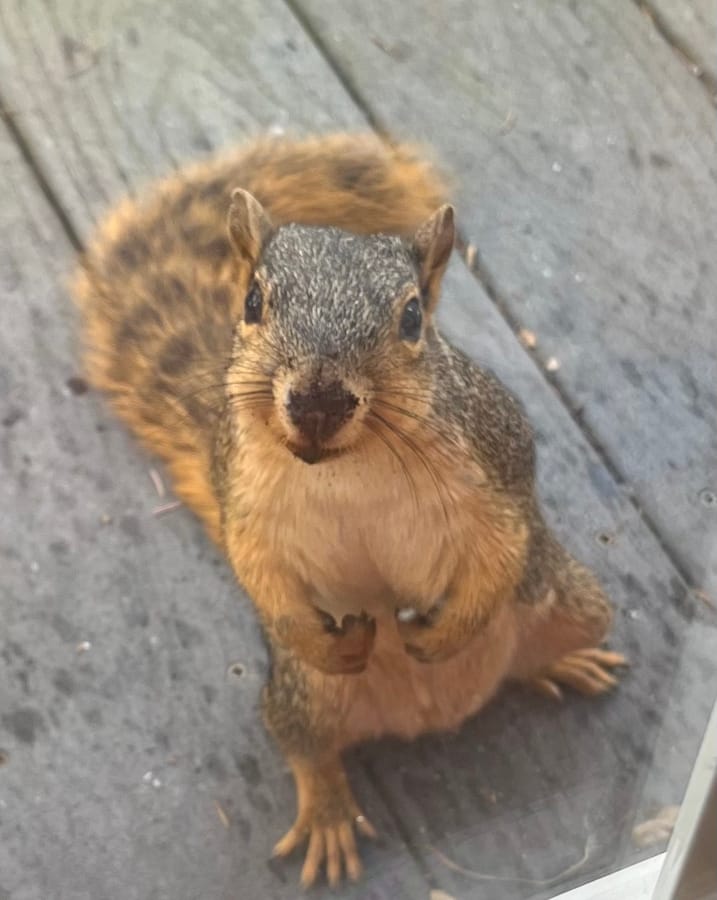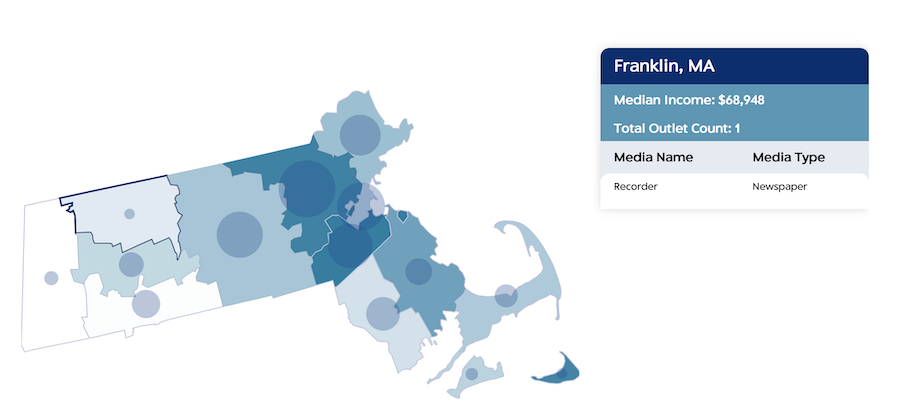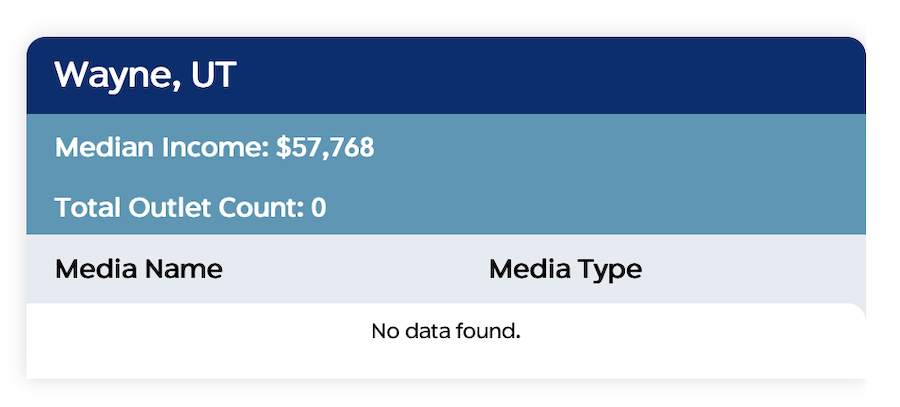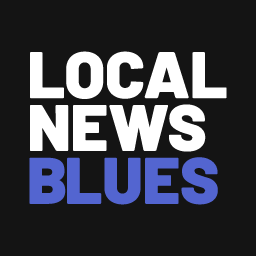Today in Bad Data
Maybe you just need a laminator.

By Alice Dreger
We’ve got a double-hitter for you this evening.
First, a few chosen words from local news publishers who have also discovered they don’t exist according to Medill. Then, a look at INN’s claim that nonprofit news reporters are making on average $83,000 a year, up 40% over a year!
The Medill map is missing quite a few long-time newspapers.
The Local News Initiative mapping project out of Medill has supposedly been telling us where news is surviving, dying, and regrowing.
But information provided to us by actual news providers shows the map has been missing long-time newspapers all over the place. That matters because it suggests the baseline data (regarding which papers have been around a long time) has been wrong. For years.
Two examples that came in yesterday:
The Medill map shows a total of one news outlet – a newspaper called The Recorder – in Franklin County, Massachusetts.

Mike Jackson, Managing Editor of The Montague Reporter, begs to disagree. The Montague Reporter has been publishing in Franklin County for over 21 years. In fact, they’re getting ready to publish their 1,000th edition this summer.
“Was there somewhere we were supposed to register to be a real newspaper?” Jackson asks. “Is this like the press-pass problem, i.e., to truly do journalism you need a friend with a laminator?”
The map has also long been missing the Wayne & Garfield County Insider, a 30-year-old print weekly newspaper covering those two counties in southern Utah.
The Medill map doesn’t list the Insider at all. In fact, it counts Wayne County as having no local news, meaning it’s one of those counties counted as a total “news desert” on the map.

For Garfield County, the map does show Corner Post, a digital site…which ironically is managed by the same folks as the Wayne & Garfield County Insider. By the way, the Wayne & County Insider has a digital presence, too, also not showing up on the map.
There’s just no excuse for this omission. I say that because Erica Walz, who runs the Insider, has told the Medill team over and over again about this mistake.
“I have contacted the Medill people FOUR times about the fact that we exist,” Walz wrote to Local News Blues, “and that they have repeatedly missed/neglected our existence in their study.”
To no avail.
“Medill has not recognized our newspaper, which is a much more significant presence [than Corner Post] providing community news in our region. I had specifically asked them to recognize The Insider, and received a reply from their investigators, Penelope Abernathy and Zach Metzger, that they would do so, but they haven’t managed it.”
Walz asks, “What is up with these people?”
Dunno. Hoping to learn more soon about how you can effectively send in corrections.
What’s missing matters.
Meanwhile, responding to our observation that ethnic outlets appear to be disproportionately undercounted on the Medill map, Ashley Woods of the Fund for Equity in Local News had this to say on LinkedIn:
“Obviously, a lot of good work has been done through this [mapping] project, but as Alice has found, publications serving people of color continue to be undercounted. And that's not OK.”
Woods echoed what others have said – that decreased visibility means decreased opportunity. She also noted that “Problems like these could be avoided if researchers initiated consistent relationships with associations like the National Association of Hispanic Publishers and the National Newspaper Publisher Association, who are serving the very publishers they struggle to recognize.” (Those two organizations collaborate through the Fund for Equity in Local News.)
“We can do better,” Woods concluded, “and publishers deserve better. Either we need accurate and robustly-maintained maps and databases that include ALL local news publishers working to serve their communities, or we need to talk about why projects like these continue to be funded.”
And boy, has this mapping project been funded.

In a preliminary response to our (many) questions, Zach Metzer, the Director of Medill’s State of Local News Project, explained at least why Patch and Chalkbeat are missing.
“We have not previously included franchised groups like Patch and Chalkbeat in our datasets; for this year’s report, we will be considering ways to incorporate these organizations into our research.”
Yowza. So the map that’s been claiming to tell us where local news is missing hasn’t been tracking Patch or Chalkbeat. Because “franchise.”
I think your doctor would want me to tell you here to take a deep breath. Maybe a dozen. Picture clouds wafting calmly over a peaceful lake….
And did you catch the news from INN last month about how much better our reporters are doing these days?
“Data from the Institute for Nonprofit News’ most recent Member Compensation Study shows that nonprofit news outlets’ salaries are generally on par with traditional news outlets. Responses to the last survey, conducted in 2022, show nonprofit news outlets’ average reporter salaries jumped to $82,943 from $58,858, well above the national average.”
Wait, are you telling me you’re not paying your reporters $83,000 a year? And that you weren’t able to boost their salaries 40% in a year?
I asked Sharene Azimi, INN’s Communications Director, to help me understand this data. She explained that this claim about “nonprofit news outlets” was based on outlets with average operating budgets of $2.07 million and averages of 14 full-time employees.
So, yeah, if you’re doing local news in the way most of us are doing local news, this claim about the industry as a whole in fact has nothing to do with you.
Don’t feel horrible about what you’re able to pay. If you like, go ahead and feel unhappy that INN is suggesting to the world that this is how well our reporters are doing – and that our operations are obviously doing fine.
Then go back to those clouds with the lake. Maybe throw in some sunflowers. Frolicking woodchucks and bunnies and squirrels?
Alice Dreger is a journalist, historian, and the publisher of Local News Blues. She founded East Lansing Info, a nonprofit digital investigative news service, and ran the operation for about ten years. Read more at the Local News Blues contributors page.





